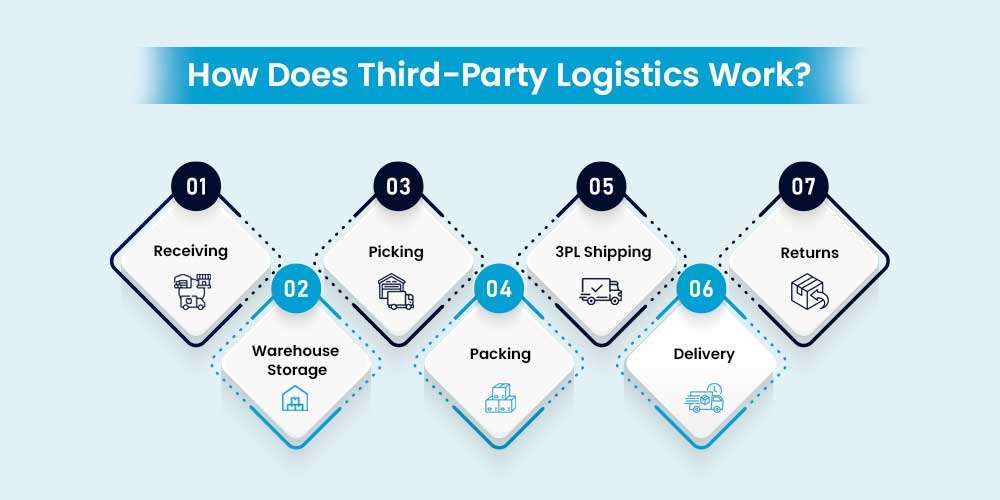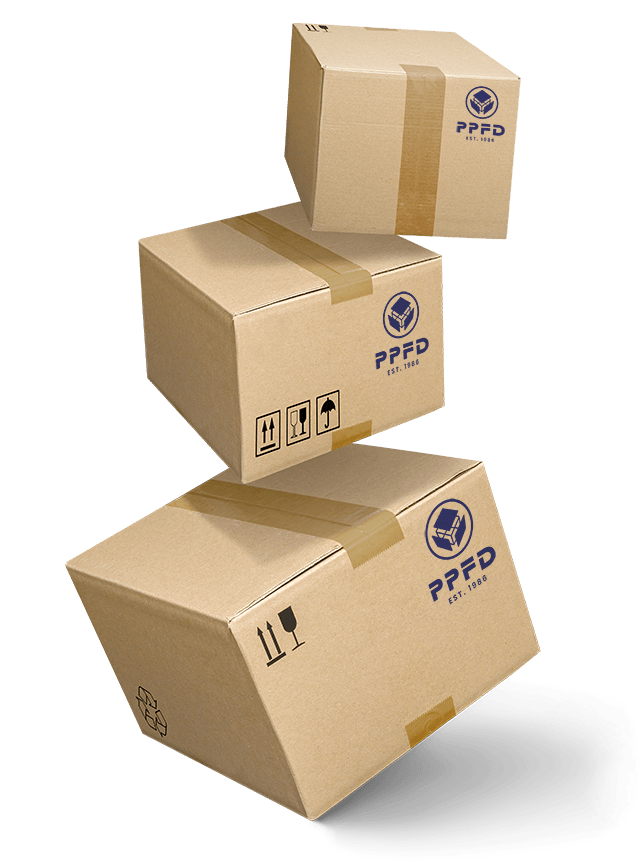
While it might sound inspiring to hear about people successfully running their businesses, do you truly know the behind-the-scenes challenges?
Juggling complex delivery schedules
Managing limited warehouse space
Figuring out the most efficient way to get products to customers
Keeping up with changing customer demands
Handling unexpected disruptions in the supply chain
These are just a few of several hurdles that can overwhelm business owners. Whether a person has just started or is already running a thriving business, dealing with logistics can be a headache. But what if we tell you that there’s a secret weapon that helps businesses grow faster and operate more efficiently?
Here, we are talking about Third-Party Logistics (3PL) – your smart partner in taking the logistics burden off your shoulders. Let’s explore everything about 3PL and help you make informed choices that can significantly impact your bottom line and overall business success.
Let’s make you understand this with an example.
Think of yourself as a business owner who needs to get the products to the customers. The process is not going to be a straightforward one, it will involve steps like storing goods, packing them perfectly, and then getting them shipped out. This is when you need the assistance of a 3PL.
1. They provide you with space to keep your products organized and safe
2. When a customer purchases something, they will pack the item safely
3. You can rely on them for shipping your orders
4. And the most crucial one – they’ll ensure that the order reaches to the customer on time
5. Not to forget, they will deal with returns if something needs to come back
Assembly and Kitting – Beyond just storage and shipping, many 3PLs can also handle the process of putting together individual parts to create a finished product (assembly) or grouping related items into a single package (kitting) before they are shipped. This can save your business valuable time and resources.

Here’s a closer look at how third-party logistics operates:
When a warehouse accepts and takes in your inventory, the process is known as receiving. What happens in the process is that the 3PL providers will ask you to complete an advance shipping notice (ASN), also called a warehouse receiving order (WRO). Through this, the 3PL will be informed about the products you are sending, the quantity of each item, and other crucial details.
When you store your inventory at the 3PL provider’s warehouse or a 3rd party fulfillment centre and not at your warehouse or business, it is called 3PL warehouse storage.
It is when a shopper hits “order now” that the 3PL system receives the order details, either manually through a spreadsheet upload or automatically through software. Once the 3PL receives the order details, they’ll assign it to a warehouse picking team. This is when a pick list is created, detailing each SKU (Stock Keeping Unit) that needs to be picked and packed. The warehouse team then fulfills the order by retrieving the specified SKUs from their designated locations within the warehouse, following the instructions on the pick list.
Then comes the most important step – packing. The warehouse team ensures to pack them as per your brand’s specifications. Also, the team will optimize the packaging to avoid split shipments, constructing in reducing costs and carbon emissions.
Once an order is packed, the 3PL provider prepares it for shipping, either through a shipping carrier like USPS or DHL or using their fleet. They typically handle the purchase and printing of shipping labels. Shipping speeds can vary based on factors such as service agreements and available options at checkout. Customers should be able to track their orders through the 3PL’s technology or the carrier’s updates.
Some 3PL providers include last-mile delivery in their range of services. This all-in-one logistics approach can greatly enhance the experience for brands. By using this streamlined solution, brands can collaborate with a single logistics partner from the moment an order is placed until it reaches the customer’s doorstep.
Some 3PL providers manage returns and exchanges, also known as reverse logistics. They can offer customers return shipping labels and various options for processing returns, including:
Operating your warehouse can be expensive due to costs associated with space, labour, equipment (like forklifts), packing materials, insurance, and more. By outsourcing logistics to a 3PL, you can achieve significant savings. Because 3PLs serve multiple brands, they have the leverage to negotiate bulk discounts with shipping companies on your behalf.
Many businesses face seasonal fluctuations in demand. For instance, the period from October to December is often the busiest for consumer goods. 3PLs provide the flexibility to increase investment during peak times and reduce it during slower periods. With lower overhead costs, it’s easy to adjust your spending to meet the changing needs of your business.
Spending your valuable time on routine tasks can be a missed opportunity. By outsourcing to a 3PL, you can focus on more important activities like engaging with customers, innovating, and expanding your product offerings.
Many 3PLs have an extensive network of fulfillment centers, allowing you to store your inventory in various locations. This geographic diversification means you can ship products closer to your customers, resulting in quicker delivery times, lower shipping costs, and a smaller carbon footprint.
If you have a loyal customer base in the U.S. but are curious about expanding into Canada, 3PLs offer a low-risk way to explore new markets. Instead of investing in your warehouse, you can partner with a 3PL that ships to both countries, giving you the flexibility to test the waters.
Today’s consumers expect fast delivery, with over 50% saying that delivery speed affects their purchasing decisions. A responsive 3PL can help you meet these expectations, ensuring a smooth logistics experience and keeping your customers happy with timely deliveries.
Some 3PLs are equipped to handle a range of shipping requirements. For example, if you sell delicate home decor items like mirrors, you’ll want them treated with extra care. Similarly, if your products include large furniture, you’ll need a 3PL that specializes in managing bulky items and their returns.
You might need to reach out to several different providers before finding the one that’s the best fit for your brand. To help you assess which third-party logistics provider is right for you, consider asking the following questions:
1. Can they handle increased volume as your business grows?
2. Are they able to integrate inventory management with your online store and other essential platforms in your tech ecosystem?
3. Can you access real-time inventory levels at each fulfillment center to help you reorder stock and avoid running out?
4. Will they provide insights on key fulfillment metrics, such as return rates, damage rates, and average delivery times?
5. Do they have fulfillment centers located close to your customers to ensure fast and cost-effective deliveries?
6. What variety of shipping options and carriers do they offer?
7. Are there any discounted shipping rates available?
8. How do they manage customer service after the sale?
9. Do they provide sustainable logistics solutions that align with your brand’s environmental goals?
By asking these questions, you can make a more informed decision about which 3PL provider will best support your business.
Running a smooth business operation is no easy feat, especially when it comes to delivery and logistics. That’s why a partner like PPFD is invaluable. Operating out of Canada since 1986, we take full charge of your logistics so you don’t have to stress about it. We’ll safely store your inventory, pack your orders with care, and ensure your products get to customers on schedule.
What sets us apart is our extensive service offering designed to meet diverse business needs. Whether you’re selling on Shopify, dealing in apparel, or managing returns, we make it easy. Businesses often highlight their efficiency and willingness to adapt as markets change. Even during busy periods when things might slow down a bit, our expertise in the Canadian market and flexible approach make us a dependable choice for growing businesses.
Ready to simplify your logistics? Contact us today to learn how we can support your business as a leading Third-Party Logistics provider!
Share :


get started
Our team is eager to partner with you and show why PPFD is the go-to choice for businesses aiming to streamline their logistics and distribution.
